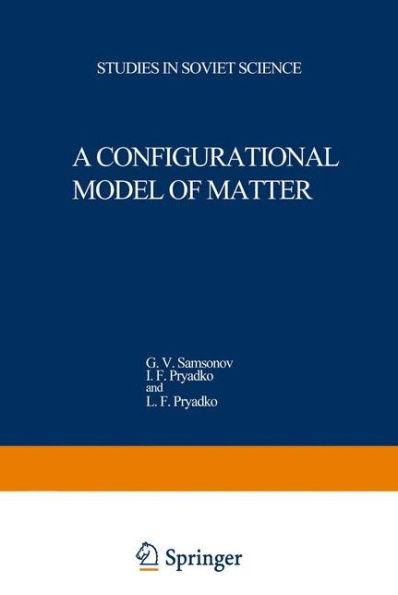A Configurational Model of Matter
The book we are presenting to American and other English speaking readers is a review of the work on the electron structure of elements, alloys, and compounds, which was started back in the fifties. This work gradually grew into a system of ideas on the electron structure of condensed matter which is now known as the configurational model. This model is based on the assumption of the preferential formation of the most stable configurations of the localized va lence electrons in condensed matter. The existence of these stable configurations and the exchange of electrons with the de localized (collective-state) subsystem determines those properties which are related to the electron structure. The conclu sions which can be drawn from the applications of the configura tional model are only qualitative but they explain quite clearly the nature of various properties of condensed matter, and they are helpful in the search for materials with specified properties. The American edition has been corrected and supplemented in many minor respects. Moreover, the opportunity was taken to revise thoroughly the section on the fundamentals of the configura tional model in the light of the latest theoretical developments. other parts of the book have been shortened to eliminate material which is not of fundamental significance or has not yet been developed sufficiently fully.
1004106682
A Configurational Model of Matter
The book we are presenting to American and other English speaking readers is a review of the work on the electron structure of elements, alloys, and compounds, which was started back in the fifties. This work gradually grew into a system of ideas on the electron structure of condensed matter which is now known as the configurational model. This model is based on the assumption of the preferential formation of the most stable configurations of the localized va lence electrons in condensed matter. The existence of these stable configurations and the exchange of electrons with the de localized (collective-state) subsystem determines those properties which are related to the electron structure. The conclu sions which can be drawn from the applications of the configura tional model are only qualitative but they explain quite clearly the nature of various properties of condensed matter, and they are helpful in the search for materials with specified properties. The American edition has been corrected and supplemented in many minor respects. Moreover, the opportunity was taken to revise thoroughly the section on the fundamentals of the configura tional model in the light of the latest theoretical developments. other parts of the book have been shortened to eliminate material which is not of fundamental significance or has not yet been developed sufficiently fully.
54.99
In Stock
5
1

A Configurational Model of Matter
289
A Configurational Model of Matter
289Paperback(1973)
$54.99
54.99
In Stock

Product Details
| ISBN-13: | 9781468416107 |
|---|---|
| Publisher: | Springer US |
| Publication date: | 05/02/2012 |
| Series: | Studies in Soviet Science |
| Edition description: | 1973 |
| Pages: | 289 |
| Product dimensions: | 5.98(w) x 9.02(h) x 0.03(d) |
From the B&N Reads Blog
